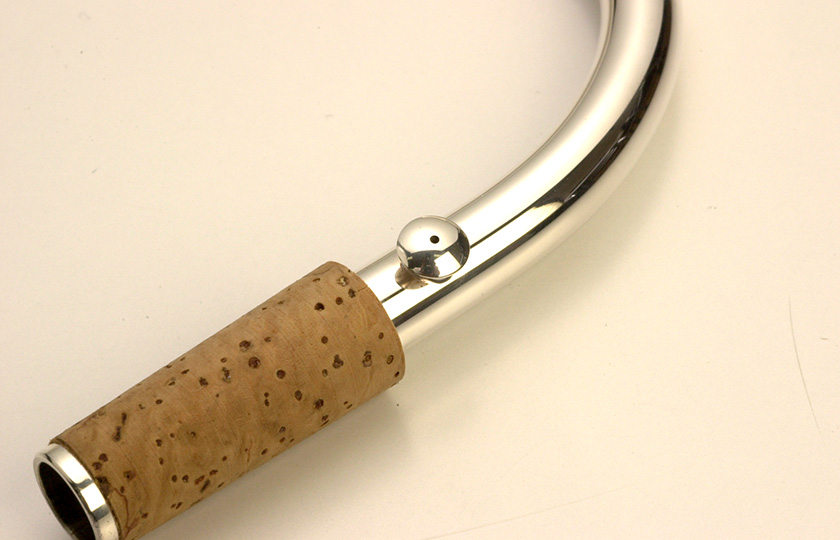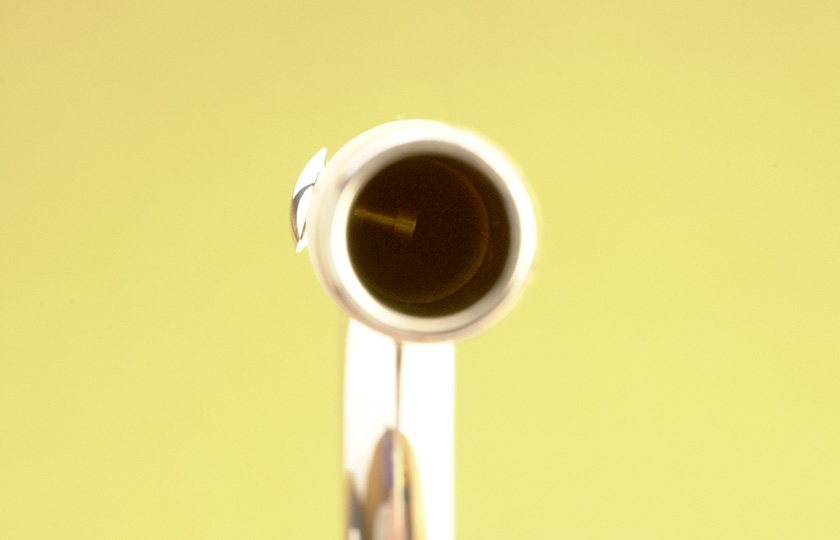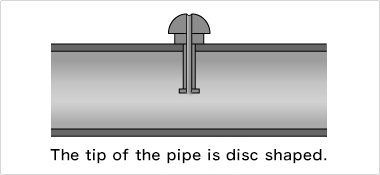Trivia
There's a needle in the bocal!?
The bassoon's pianissimo key, which makes it easier to produce high-pitched and soft notes, is not in the main wooden body of the instrument but is attached to the metal bocal. Located next to the cork, the corresponding tone hole is closed by a pad mechanism that extends from the tenor joint. Furthermore, the tone hole isn't simply closed as is the case elsewhere, but is instead connected to a thin pipe that protrudes into the interior of the bocal. This needle-thin pipe extends into the center of the bocal, and its tip forms a tiny disc shape, so small that it is difficult to see with the naked eye.
Many people accidentally bend or fold this delicately formed component when they clean the inside of the bocal. As a part that protrudes into the interior is unexpected, this is likely to go unnoticed, but a degree of caution is needed.

The tone hole on the outside of the pianissimo key is covered by a pad (not shown)

On the inside, it extends to the center.

Pianissimo key diagram
Musical Instrument Guide : Bassoon Contents
Structure
- What Kind of Musical Instrument is a Bassoon?
- A Long Tube that can be Separated
- The Bocal and its Various Functions
- Unique Features of the bassoon, and How to Play
- [Experiment1]Comparing the Sound of Tone Holes cut Obliquely and Perpendicular
- [Experiment2]Encasing the Bore in Various Materials
- Bonus Experiment
How to Play
How the Instrument is Made
Choosing an Instrument
Trivia
- An Instrument that is Sensitive to Humidity
- Sounds from water in the U-tube?
- There's a needle in the bocal?!
- Comments by conductors caused popularity to tumble?
- Bassoon classics - Chamber music works
- Bassoon classics - Concertos
- Is the "contra-fagotto" a contrabassoon?
- What is the best tool to file a reed?
